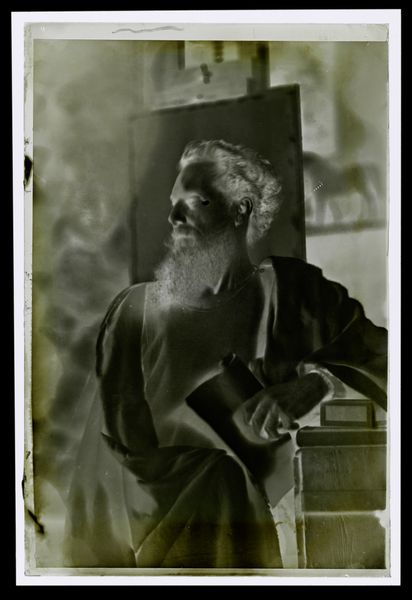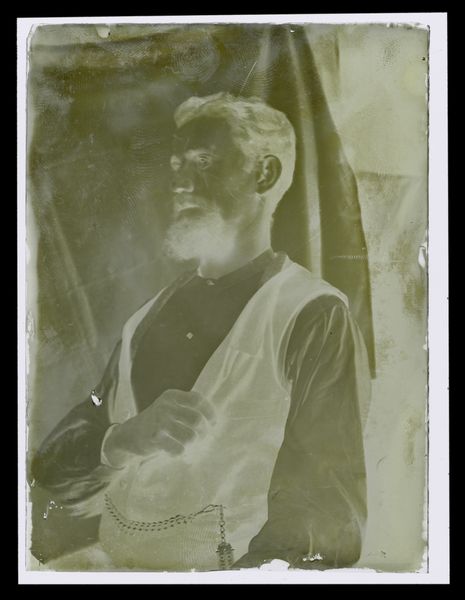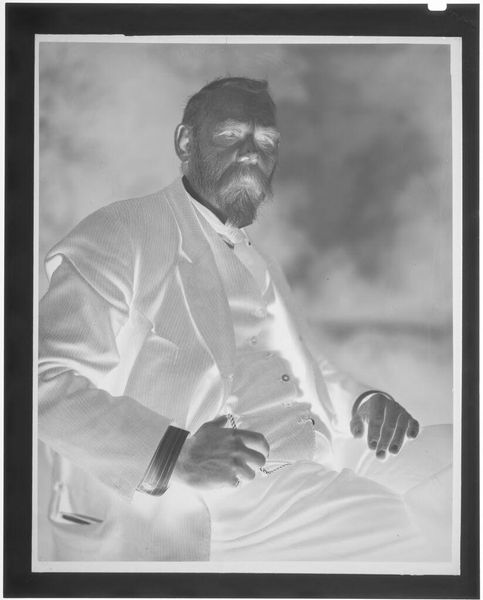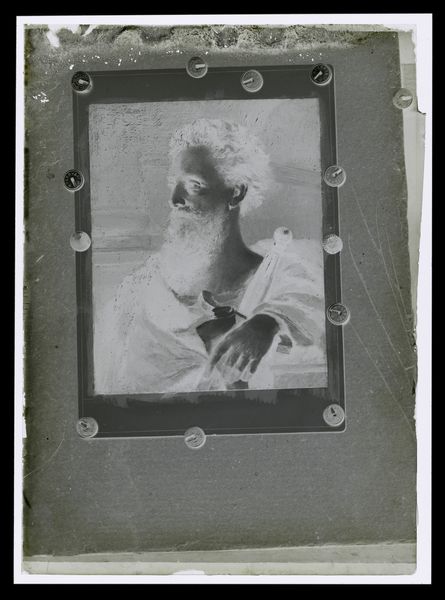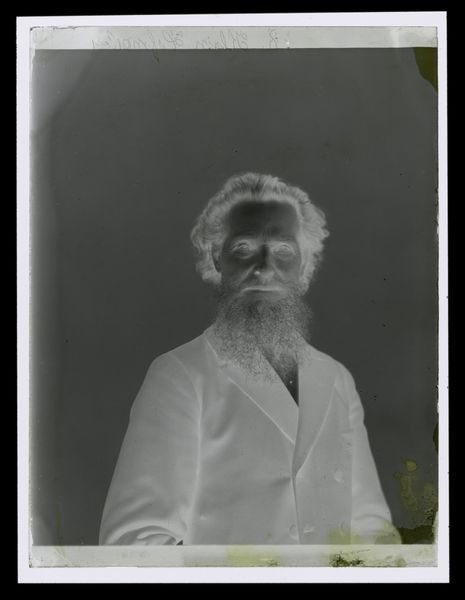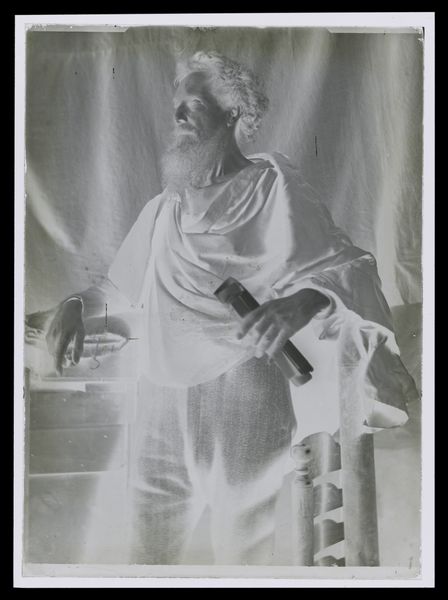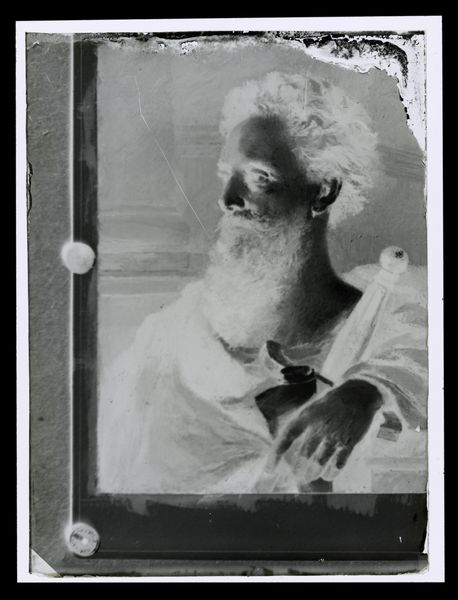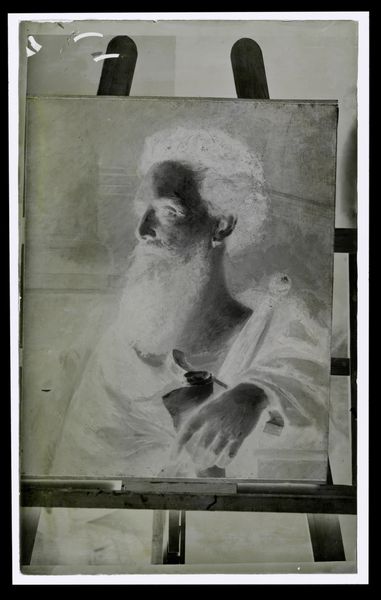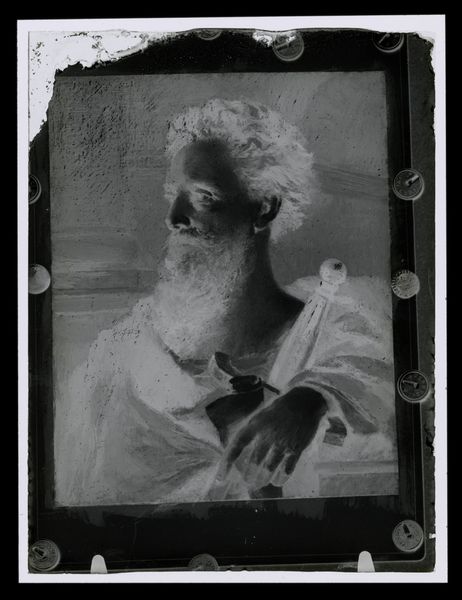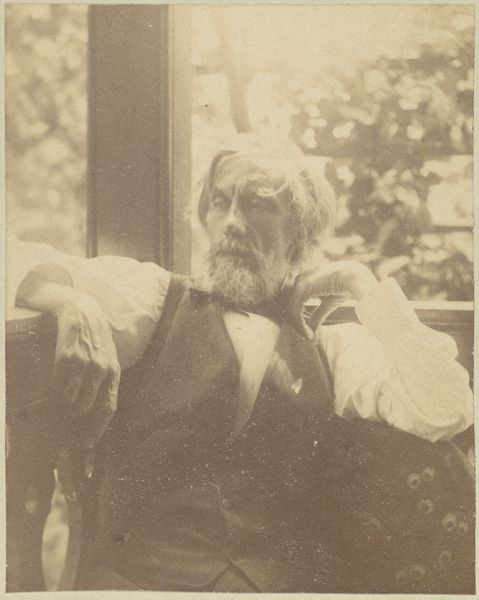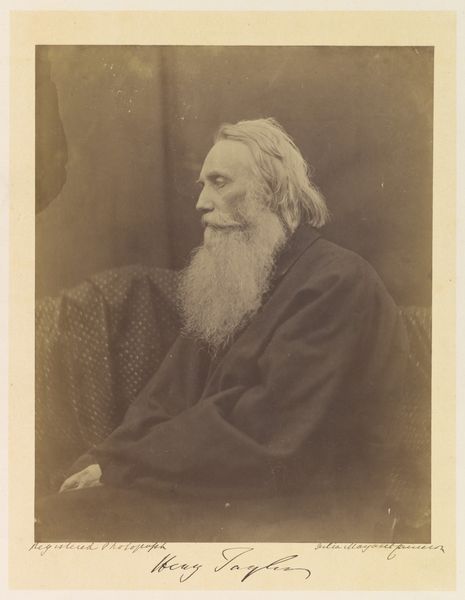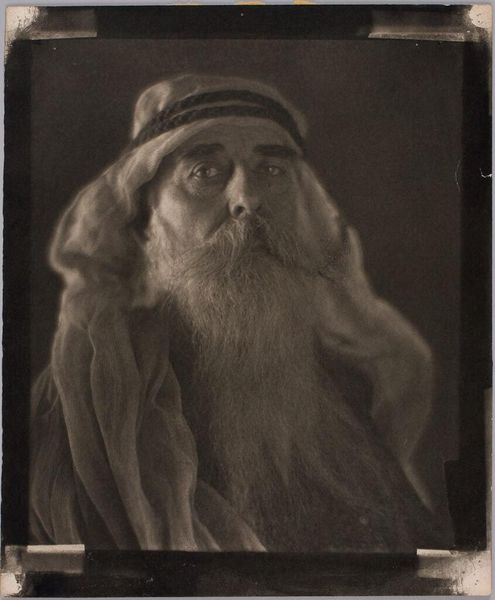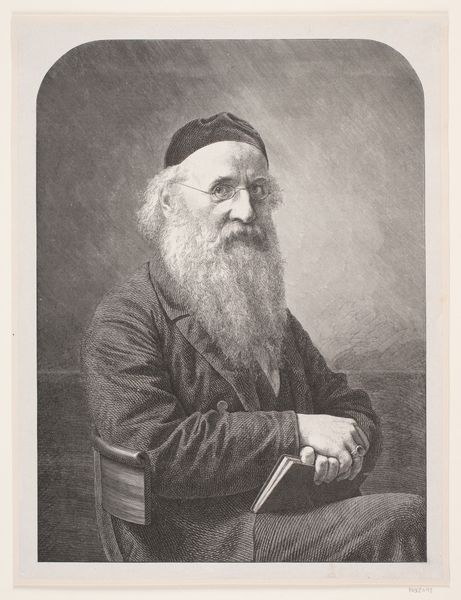
photography
#
portrait
#
self-portrait
#
photography
#
geometric
#
black and white
Dimensions: height 176 mm, width 116 mm
Copyright: Rijks Museum: Open Domain
Curator: This fascinating photograph, tentatively dated between 1865 and 1900, is titled “Self-Portrait as the Apostle Paul” by Laurens Lodewijk Kleijn. It's an albumen print— a fairly early photographic process— rendering a rather haunting, ethereal quality. Editor: Haunting is right. My first impression is one of profound intensity, a kind of burdened wisdom etched into the subject's features. The reversed tones create a strangely powerful effect. Is this a negative, perhaps? Curator: Exactly! The inverted values immediately cue certain expectations that Kleijn plays with—namely, to provoke the symbolic weight of religious figure and creative "apostle", self. Notice how carefully posed he is? This wouldn’t have been a candid snap; he carefully constructed the setting to self-identify with an important and historically formative religious figure. Editor: Indeed! Considering the social function of art at the time, that deliberate connection seems telling. Photography was increasingly accessible, yet the claim of portraying oneself as such a historically potent figure implies not only deep conviction, but, perhaps, also a commentary on the artist's own place and role within his society, daring us to ask questions about ego, craft, and public persona. Curator: Well put. Kleijn evokes Paul –arguably the most transformational advocate in early Christianity-- perhaps suggesting an analogous role for himself, or for artists more broadly. And consider the aesthetic: the geometric picture frame, his assured grasp, and the chiaroscuro between dark robes and radiant hair, are very consciously presented. This all contributes to a lasting visual association with the themes of creativity and inspiration we so strongly value even today. Editor: This photograph definitely invites pondering how identities are molded and presented for public consumption, and what aspects of that historical moment—or the artist himself--compelled him to embody this iconic religious character. It bridges then and now in interesting ways. Curator: It’s true, that in many ways, this self-presentation offers a very enduring image—one that can stir similar responses regardless of whether we are Christian or non-religious, given the impact of its references to artistic self-reflection. Editor: Quite so! Thank you.
Comments
No comments
Be the first to comment and join the conversation on the ultimate creative platform.
